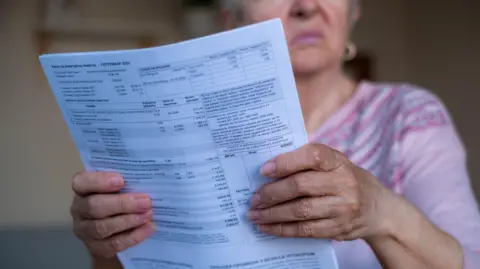**Faisal Islam: The Cost of U-turn on Disability Benefits**
In recent developments regarding Labour’s welfare reforms, important decisions have been made that will have significant financial implications. Faisal Islam, the Economics Editor, weighs in on how these changes will affect government finances, particularly focusing on disability benefits and the broader welfare system. The original approach aimed at slashing expenditures by billions, primarily in response to the rapid growth of welfare costs. However, this attempted overhaul has now resulted in what appears to be a sudden pivot—or a U-turn—raising questions about the economic stability and credibility of these financial plans.
Initially, the government devised a strategy that included cuts amounting to £5 billion by the fiscal year 2029-2030. However, this latest U-turn has seemingly invalidated much of that intended savings. Specifically, it has been revealed that more than half of those proposed cuts will no longer be executed. A substantial portion of these savings was expected to come from revisions to the Personal Independence Payment (PIP) eligibility criteria. Previously, it was estimated that £4.5 billion in savings would be generated through this alteration, yet these changes are now effective only for new claimants beginning in November 2026, effectively protecting 370,000 existing claimants out of the total 800,000 assessed by the Department for Work and Pensions (DWP).
The adjustments to PIP assessments are noteworthy, as they stipulate a new evaluation protocol for applicants. Some tasks, such as preparing meals or personal hygiene, will be scored on a scale that requires new claimants to reach at least four points in one category to qualify for support, diverging from previous broader criteria. For instance, needing help with personal grooming now results in points that vary significantly based on the specifics of the assistance required. This shift, coupled with the involvement of disability charities in refining these assessments, suggests that expected savings may not materialize as initially calculated.
Additional ramifications from this reform extend to Carer’s Allowance, where estimates suggest costs could rise by approximately £2 billion. Key aspects of the universal credit reform, particularly related to the health element, were also slated for revisions aimed at raising £3 billion by 2029-2030. However, existing beneficiaries will now see increases aligned with inflation, creating further fiscal shortfalls.
As the government hastens to implement forward-thinking investments in employment and skills, aimed at supporting those on health benefits to re-enter the workforce, it reduces the appearance of these measures being merely cost-cutting initiatives. The commitment to improve support for skills and employment was initially scheduled for later years, but the now accelerated rollout will better align with the goals of overall welfare reform.
Despite the myriad changes under consideration, substantial uncertainty remains regarding the original cost projections that were based on numerous variables, including beneficiaries’ responses to new eligibility thresholds. Critically, whether individuals will qualify under the newly instituted four-point scoring system remains a pivotal aspect. Current estimates suggest that the total financial impact of the U-turn could yield a saving of around £2.5 to £3 billion, substantially lower than the original targets.
As these developments unfold, the government’s financial challenges are substantial. These adjustments come on top of a recent £1.25 billion expense associated with alterations to winter fuel payments, imposing additional pressure on the fiscal budget. Ultimately, as the Chancellor adheres to stringent borrowing rules, it prompts the potential need for increased taxation or additional cuts in unrelated areas to maintain fiscal integrity. These issues underline the extensive and complicated nature of reforming welfare and the far-reaching consequences of these economic decisions, all of which will be clarified in the upcoming budget report from the Office for Budget Responsibility.











